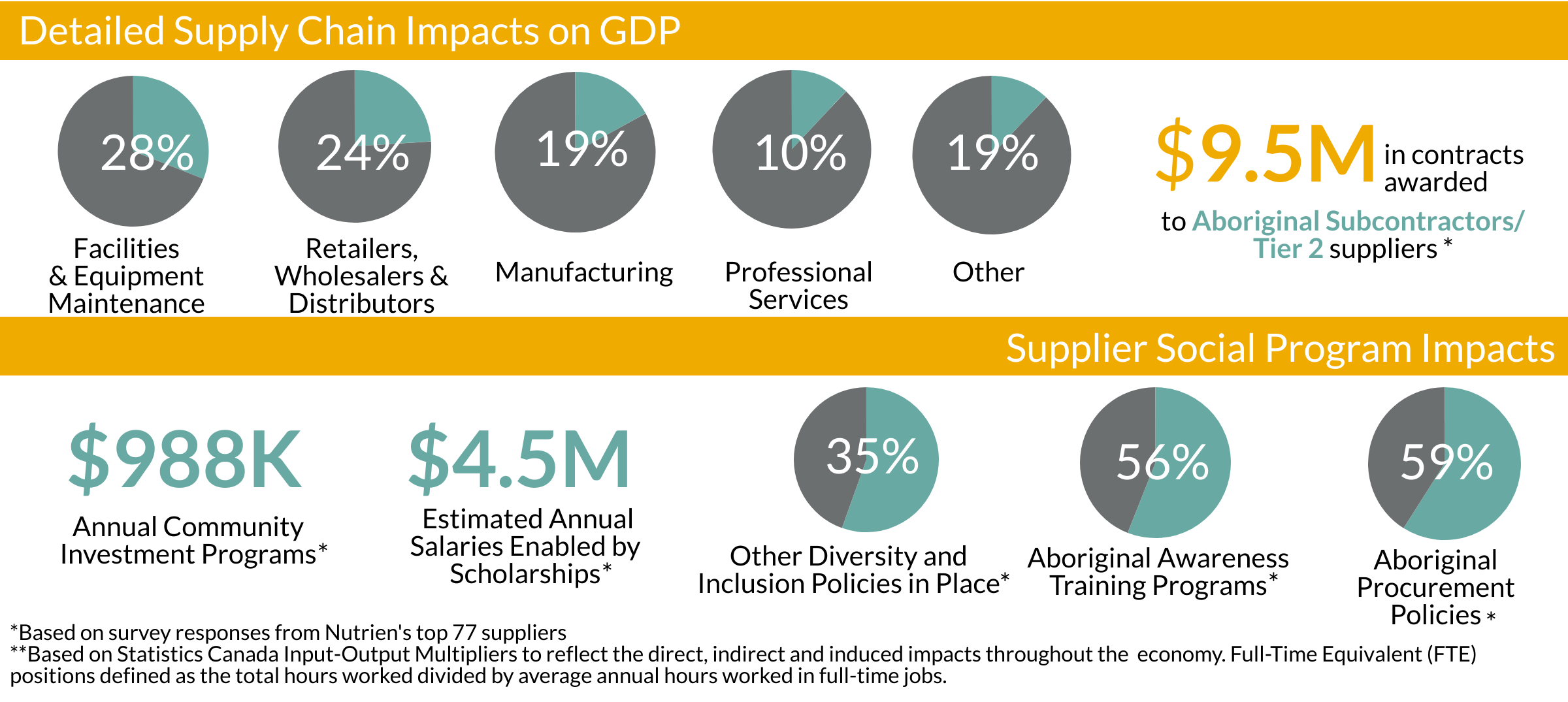As corporate social responsibility (CSR) has evolved, companies have become accountable to more than just their shareholders. Stakeholders of all stripes – employees, suppliers, community members, and governments – are demanding greater accountability and transparency from organizations. Though traditional financial and CSR reports may inform on the risks and opportunities facing a company, they often lack details on the depth of company’s positive impact on local and global communities.
What is Socio-Economic Impact Reporting?
Socio-economic impact reports go beyond traditional financial or CSR reporting. They provide quantifiable evidence of a company’s positive socio-economic impact on its stakeholders, with a focus on social and economic rather than environmental aspects.
Data-driven and informative, socio-economic impact reports allow companies to better understand and communicate their impact in the communities in which they do business as well as throughout their supply chain.
A Recent Case: Indigenous Inclusion and Reconciliation
Results from recent AGMs, such as the overwhelming shareholder support for a resolution on Indigenous inclusion and reconciliation at TMX Group, offers a powerful signal to the company and others.[1] TMX Group's board will report to shareholders on its work to develop internal programs and policies on diversity, equity and inclusion that encompass Indigenous employees, review procurement from Indigenous-owned businesses and engage with qualified Indigenous organizations to support this work.
A growing segment of investors are committed to seeing continued corporate efforts on the advancement of issues like social and financial inclusion and reconciliation. The publication of a socio-economic impact report can help companies to disclose to stakeholders the meaningful impacts of those efforts.
Measuring Socio-Economic Impact Through Direct and Indirect Spend
An important aspect of measuring socio-economic impact is understanding a company’s direct and indirect spend in the community and beyond. Direct spending considers the programs and initiatives that the company created or actively supports such as foundations or community programs. Indirect spend considers a company’s supply chain and the number and types of companies in it. For instance, an organization can evaluate the number of people employed at its supplier companies, or how many of the supplier companies are owned by women or minorities.
With clarity on where the money goes, the next step is determining the impact of that money. What is the impact of supplier companies on their communities in terms of GDP growth, job creation, or investment in businesses from underrepresented groups?
Creating a Socio-Economic Impact Report
Producing a socio-economic impact report is a worthwhile exercise for any company wanting to understand and demonstrate the depth and breadth of its positive impact. There are a few options for organizations interested in embarking on this process, each with its own advantages and disadvantages.
- Do it yourself: An organization can collect, analyze and calculate its spend and impact data via internal teams. Although this approach benefits from greater knowledge and understanding of company programs and initiatives, the process can be time-consuming and the outcomes may be viewed as less credible by some stakeholders.
- Hire an outside consultant: A common practice is to outsource data collection and analysis to consulting firms. While this may free up internal resources, the process can be slower and more costly.
- Partner with sustainability data experts: Working with an independent sustainability performance firm with software solutions is an effective and efficient approach for many organizations. Companies can leverage their partner’s sustainability expertise to better understand their own impact and that of their suppliers. The software solutions should also allow an organization access to the data to support ongoing process improvements and tracking.
Sustainalytics’ Corporate Solutions has worked closely with several organizations on their socio-economic impact reporting. Below, we’ll take a closer look at Nutrien’s report and how the company was able to measure its impact and activities among Indigenous communities.
Nutrien Proves the Socio-Economic Impact of its Indigenous Engagement Strategy
“Equity, diversity and inclusion often sits on the edge of peoples’ desks. This work usually gets done one of three ways: for compliance, for public relations, or for culture change – and only one of those has lasting impact.”
LISA MOONEY, GLOBAL LEAD, SUSTAINABILITY AND STRATEGIC INCLUSION, NUTRIEN
Amid the social and economic upheaval seen in 2020, many companies scrambled to incorporate a social aspect into their sustainability strategies. Nutrien, a Canadian based provider of crop inputs and services, is further down this journey than others. Over the past decade the company evolved its strategy to meaningfully engage Indigenous people and communities in its Canadian operations.
Nutrien knew its sustainability initiatives to support the inclusion and development of Indigenous people and to build diversity into their supply chain were positively affecting the local communities. However, the company struggled to calculate its efforts
in ways that were meaningful for internal and external stakeholders. Nutrien knew that they needed an independent firm to help quantify the social and economic impact of its sustainability efforts, in particular its supply chain efforts.
Working with Sustainalytics, Nutrien looked at how it applied its Indigenous relations strategy to its own workplace and workforce, its community relations and investments, and its supplier diversity. The goal was to better understand the downstream impact of investments in the community and with local suppliers.
With a socio-economic impact report, Nutrien was able to measure its investments in community programs as well as jobs created and GDP impact. The report also helped Nutrien to illustrate how it’s changing the communities in which it does business.

Source: Sustainalytics
As a result of working with Nutrien, many of its suppliers developed their own Aboriginal procurement and employment policies, invested in local communities and employee awareness programs, and provided scholarships to Aboriginal students. These efforts have made long-term impacts on the Aboriginal community in Saskatchewan and across Canada.
[1] SHARE, “Press Release: TMX Group Limited shareholders vote in favour of company supported shareholder proposal on Indigenous inclusion,” accessed May 26, 2021 at https://share.ca/press-release-tmx-vote-reconcilation/
Page header image courtesy of Nutrien Ltd.
Recent Content
Risk and Opportunity in Biodiversity: How Sustainable Finance Can Help
This article outlines how biodiversity loss poses material risks to business and how it connects to many other issues that companies can’t ignore. In addition, it covers how biodiversity conservation presents substantial economic opportunities, and how businesses can address and access these opportunities by issuing linked instruments that integrate biodiversity considerations.
Today’s Sustainable Bond Market: Boosting Confidence in Sustainable Bond Issuances
In this article, we examine the kinds of sustainable bonds offered in the market, some of the key regulations being developed in different markets and the current initiatives to improve the quality and credibility of issuances.
Webinar Recap: How Integrating ESG Can Drive Opportunity for Private Companies
Recently, Morningstar Sustainalytics hosted a webinar – ESG in the Lifecycle of a Private Company: How Stakeholder Demands Drive Sustainability in Private Markets – to address some of the questions private companies might have surrounding ESG and how it could impact their business.




